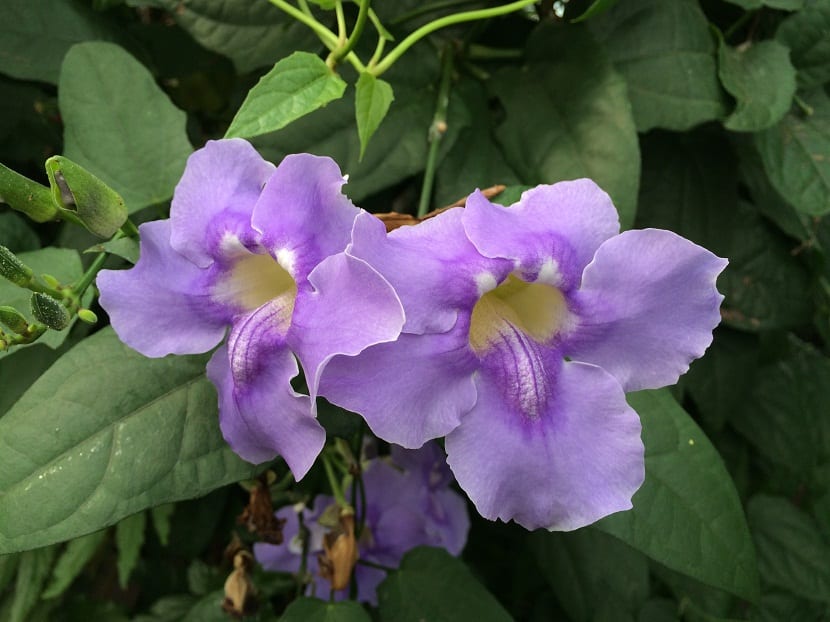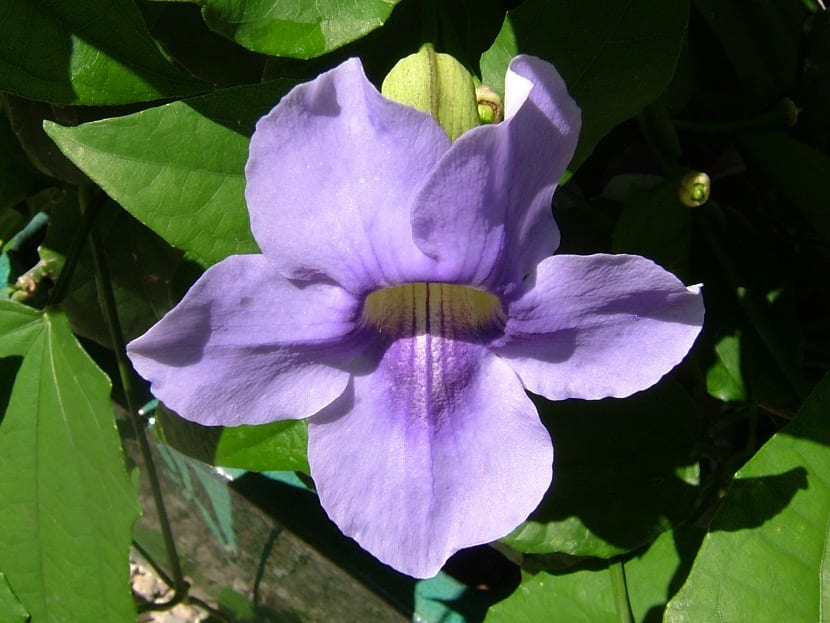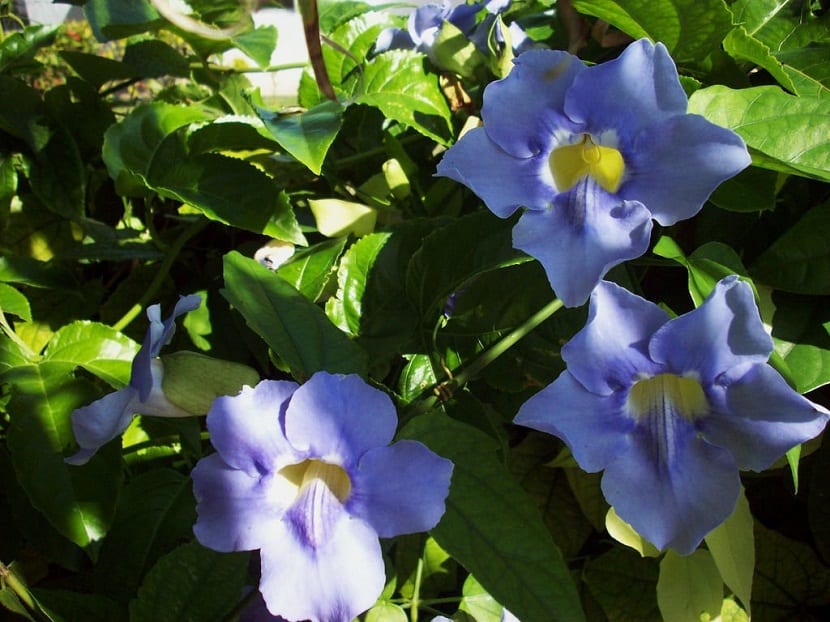
La Thunbergia grandiflora it is one of the botanical species of suckling, evergreen and climbing plants that are part of the genus thunbergia, flowering plants found in the temperate regions of South Asia in countries such as India, Nepal, Myanmar, Indochina, and China.
It is also known by the names of blue trunk vine, clock vine, blue tumbergia, citrine and blue bignonia.
Features

This is a plant that has quite dense foliage and that can reach between five and seven meters high, in addition its young stems are angular, pubescent and light in shape. Its leaves are simple and of an intense green color, of rough texture, opposite, with an oval or heart shape and with a measurement of 5 and 10 by 3 and 8 centimeters.
It has an asymmetric base that is cut, an apex that is acuminate, and its serrated margin is sinuous-lobed. It usually has about three or seven ribs that are main and a pubescent petiole measuring between 5 to 8 centimeters long.
It is a plant that has quite large flowers arranged in a solitary way, on certain occasions are arranged in hanging clusters that are up to a diameter in length in hairy pedicels that are between 2 and 5 centimeters long, with bracts that are tiny, obovate-oblong, pubescent and acuminate.
The calyx has the shape of a serrated ring and its corolla can be lavender blue, light blue, violet blue and in certain cases white and with a white neck, with a trumpet shape measuring between 4 and 7 centimeters in diameter, which has a cone-shaped tube at the base which then widens and takes the shape of a bell. The fruit is arranged in a glabrous or pubescent capsule that it measures about 9 or 13 millimeters in diameter.
Farming
The optimum temperature for sowing this plant is about 21 to 24 ° C. They are able to withstand a higher temperature although in this type of case it is necessary that they be in a sufficiently ventilated environment. When is winter season must be at a temperature above 10 ° C, being 16 ° C the optimum temperature to be able to survive.
These are plants that need sunlight, but it is recommended that it be not directly. When grown outdoors it is important to place them in a place that does not receive the sun's rays when they reach more temperature.
Care
Irrigation
In the summer months it is important to water it until the ground has sufficient moisture. Departing from autumn and during winter it is important to reduce watering, in such a way that the earth only stays moist. If it is in a pot, avoid puddles.
Fertilizer
It is supplied every two weeks at the beginning of spring and in summer. The compost must be liquid and diluted in water, slightly reducing the dose taking into account the instructions of the product. For the rest of the year the subscription must be suspended.
Pruning
When the plants are young they have to be purified so that their branching can be favored and so that the plant is much more compact. For adult plants, pruning must be done in spring to reduce branches that have grown too messy.
Plagues and diseases

- When temperatures are too low, the plant can lose its leaves.
- If it is watered too frequently, the leaves lose their color and fall off.
- If the plant is exposed directly to the sun, burns will appear.
- It is a plant prone to aphid attacks and, if not controlled, it can cause quite serious damage.
- Spider mites or spider mites can cause leaves to turn yellow or brown.
Uses of Thunbergia grandiflora
This plant can be used to cover the walls due to its large size and how showy its flowers are. It takes root very easily and has a fairly accelerated growth, tending to thrive very easily in a soil that is slightly acidic.